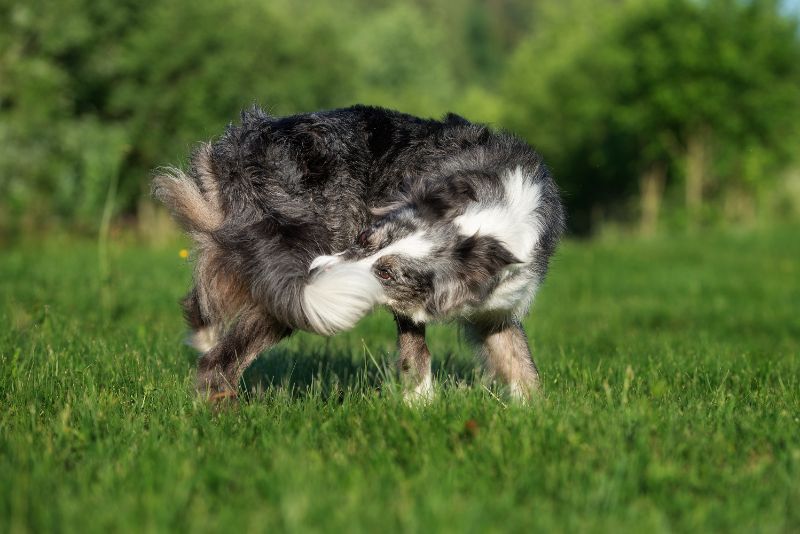Why Do Dogs Chase Their Tails?

Dogs have the uncanny ability to continually delight us, inspire us, and make us laugh. Watching a dog chase its own tail is one of the many funny and endearing behaviors, but could these doggy antics actually be a sign of a deeper problem?
Animal behavior is fascinating to us at Schertz Animal Hospital, especially when it may give us an insight into a pet’s mental or physical health. Exploring the reasons why some dogs chase their tails is one such way that we take a peek into their minds, and keep an eye on their wellbeing.
Why Dogs Chase Their Tails
Is your sweet pup just having fun when they spin in circles in pursuit of their own tail, or is there something more going on? Some of the most common reasons dogs chase their tails include:
Playfulness – Puppies and younger dogs are most likely chasing their tails for the sheer fun of it. Puppies may not yet realize that this furry, wriggling thing that keeps running away from is actually a part of their own body!
Boredom – Tail chasing may be a way for a bored or anxious dog to expend excess energy. The easiest fix for this type of tail chasing is to make sure your dog gets plenty of exercise and playtime each day. Aim for a walk in the morning and evening, and a game of fetch or tug-of-war somewhere in between. Doggie daycare, dog walkers, or neighbors can come to the rescue if your dog is regularly left alone for many hours during the day.
Genetics – For reasons unknown, certain breeds, such as German shepherds and terriers, seem to chase their tails more than others, even as they get older. This happens more frequently when the dogs aren’t exercised sufficiently.
Medical issues – An injury to the tail or itching around the anal area due to intestinal parasites, fleas, impacted anal glands, or food allergies can cause a dog to lick, bite at, or chase the tail. Additionally, certain neurological disorders can trigger the behavior.
Attention seeking – Do you laugh every time your dog chases their tail? Even if your scold your dog for the behavior, you may be inadvertently reinforcing it. For dogs that crave attention, this can be a way to elicit a response from you, whether it’s good or bad. Making sure your pup is getting plenty of healthy attention and interaction each day, and purposely ignoring the tail chasing, should curb the behavior.
The Bottom Line
Although tail chasing can be normal, don’t hesitate to contact your veterinarian if the behavior pops up suddenly or seems to be increasing. Getting your pet back to optimal health is our top priority!
Share This Article
About
Schertz Animal Hospital
Since 1976, Schertz Animal Hospital has offered the greater San Antonio area outstanding pet care. Our state-of-the-art animal hospital in Schertz, TX compliments our stress-free handling and experienced veterinary staff. Make an appointment online or give us a call at (210) 659-0345 today!
